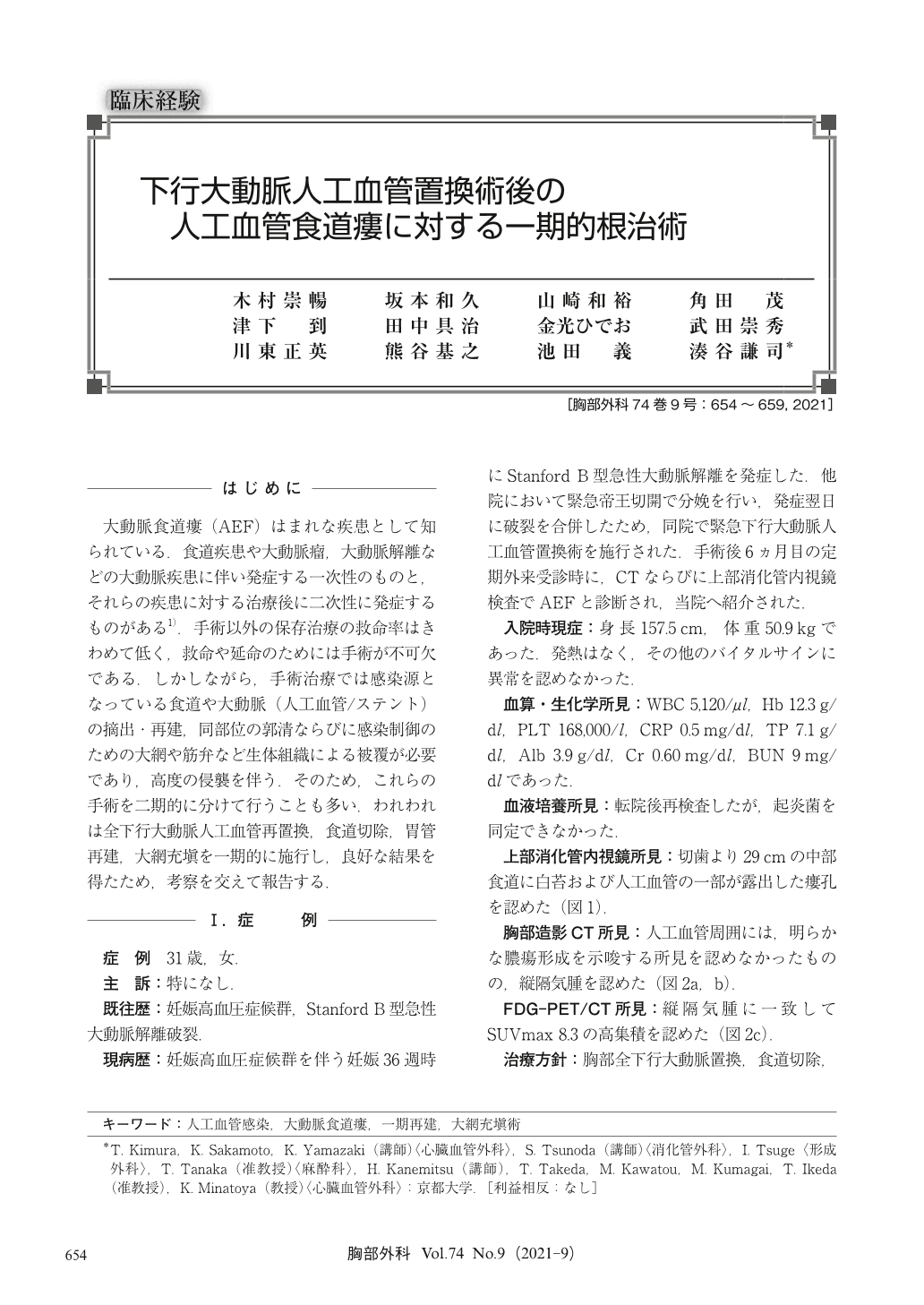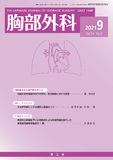Japanese
English
- 有料閲覧
- Abstract 文献概要
- 1ページ目 Look Inside
- 参考文献 Reference
大動脈食道瘻(AEF)はまれな疾患として知られている.食道疾患や大動脈瘤,大動脈解離などの大動脈疾患に伴い発症する一次性のものと,それらの疾患に対する治療後に二次性に発症するものがある1).手術以外の保存治療の救命率はきわめて低く,救命や延命のためには手術が不可欠である.しかしながら,手術治療では感染源となっている食道や大動脈(人工血管/ステント)の摘出・再建,同部位の郭清ならびに感染制御のための大網や筋弁など生体組織による被覆が必要であり,高度の侵襲を伴う.そのため,これらの手術を二期的に分けて行うことも多い.われわれは全下行大動脈人工血管再置換,食道切除,胃管再建,大網充塡を一期的に施行し,良好な結果を得たため,考察を交えて報告する.
A 31-year-old woman was referred to our institution because of aortoesophageal fistula (AEF) six months after the descending aortic replacement for acute aortic dissection. We operated one-stage repair of the AEF. Thoracoscopic esophagectomy was firstly performed in prone position from right thoracic cavity, and then the esophagus was reconstructed with gastric conduit via posterior mediastinal route with omental flap. Secondly, graft replacement of the descending aorta using lateral oblique straight incision was performed and the graft was covered with omental flap simultaneously. The postoperative course was uneventful, and she started oral intake on the 13th day after surgery. Although the one-stage surgery for the AEF is highly invasive, it could be a good option for selected cases.

© Nankodo Co., Ltd., 2021


